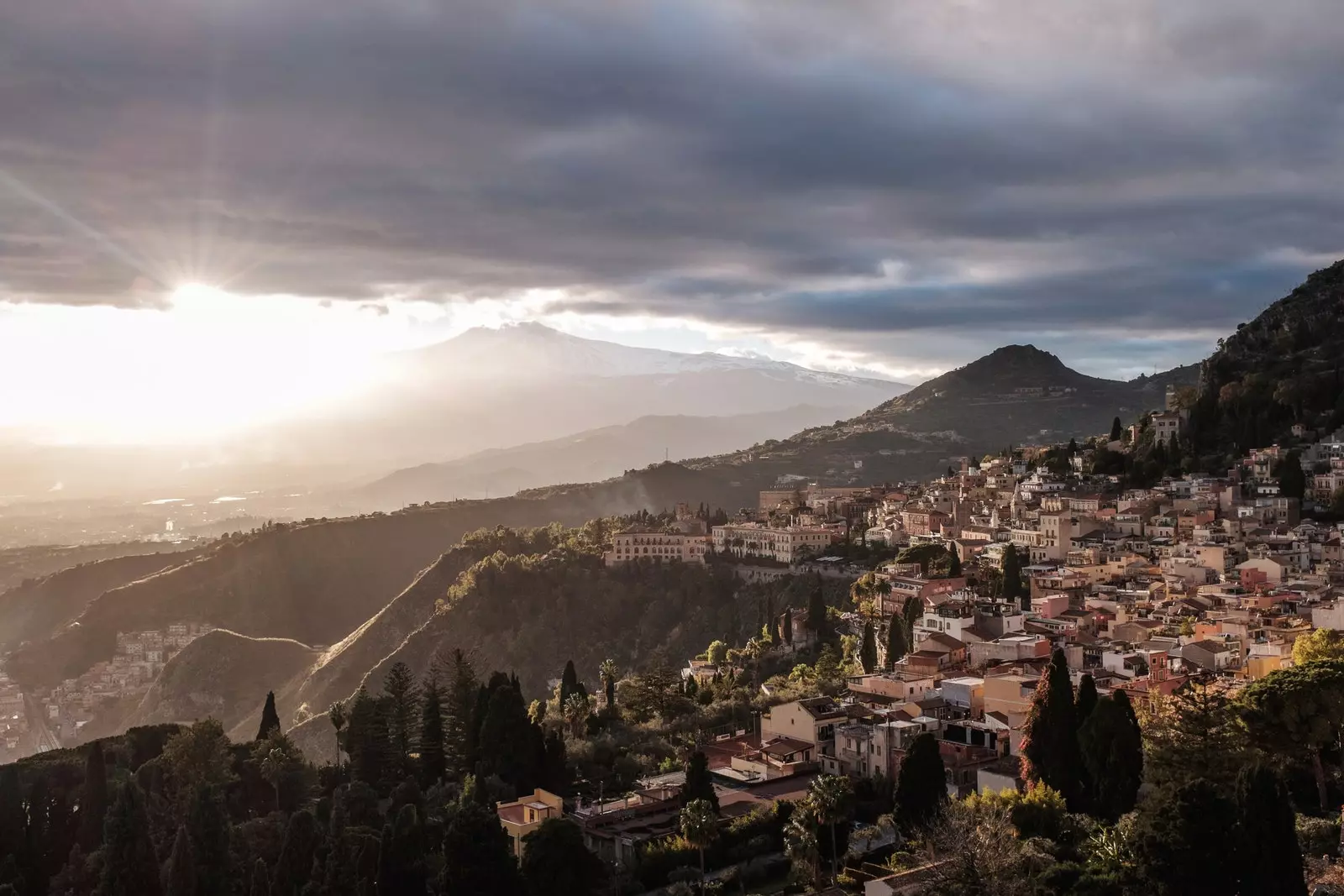
Taormina, the pearl at the foot of Mount Etna
Perched on a black cliff, maintaining the balance between terraces and black cliffs like the calderas of Etna, Taormina (Sicily, Italy) appears to the visitor as a flirtatious tightrope walker who plays not to rush over the waves of the Mediterranean.
Its vertical balconies have seen Hollywood stars, scientists, philosophers, musicians and writers who found in the Sicilian "pearl" what any bohemian tourist wants to experience: peace in an idyllic setting where history meets the present in the form of a fascinating firework.
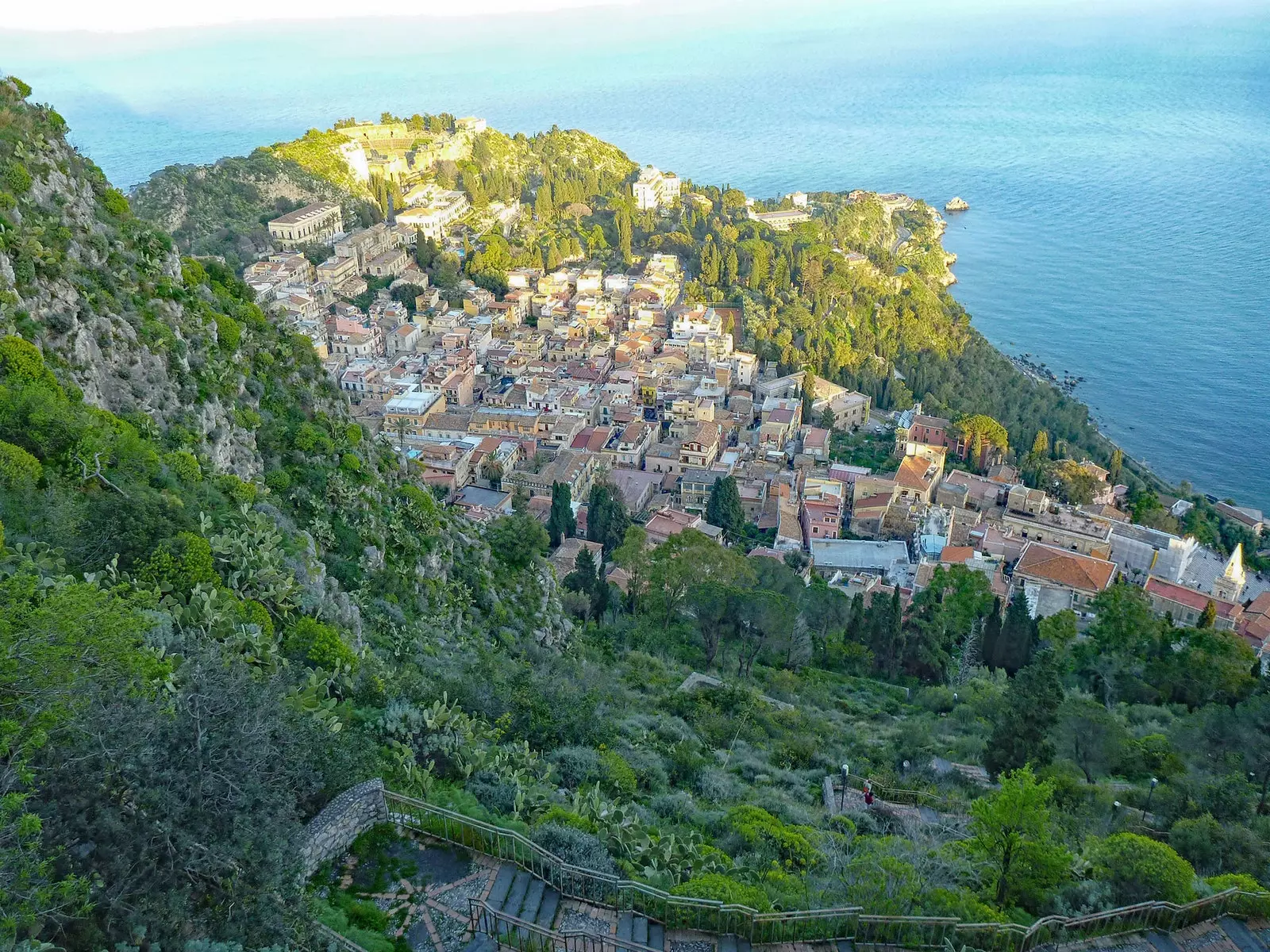
Taormina appears before the visitor as a flirtatious tightrope walker
Thus, with lights and fanfares, begins what is known in the city as "golden age of elite tourism" that made this balcony famous next to Etna. There was always a party in Taormina during the Belle Époque, when nobody thought that the world was capable of the atrocities that would be perpetrated during the First World War.
The technological advances that improved transportation They allowed the most adventurous (and the most comfortable portfolios) to launch themselves to discover the benefits of a world, the Mediterranean, until very recently mired in conflicts, revolutions and bloody unifications. If the Grand Tour of Italy that the enlightened 17th century liked so much can be considered the prelude to modern tourism, Taormina emerged, from the beginning of the 20th century, as the capital of what could already be called an authentic "influencer phenomenon": Sigmund Freud, Albert Einstein, Truman Capote, D.H Lawrence, Liz Taylor, Richard Burton, Greta Garbo…
The list of personalities who sought rest in the city, staying in pensions with incomparable views, is long and full of familiar names. They gave fame and name to a place whose beauty, hidden between the cliffs of the Straits of Messina, he was lost in the labyrinthine circuit of roads that crosses the coast of Sicily in the direction of Messina.
Today is a tourist phenomenon that is part of all the circuits that run through the island and, for this reason, it may be difficult, between souvenir shops, ice cream parlors and hotels, to get the most out of what was, and still is, the authentic Taormina.
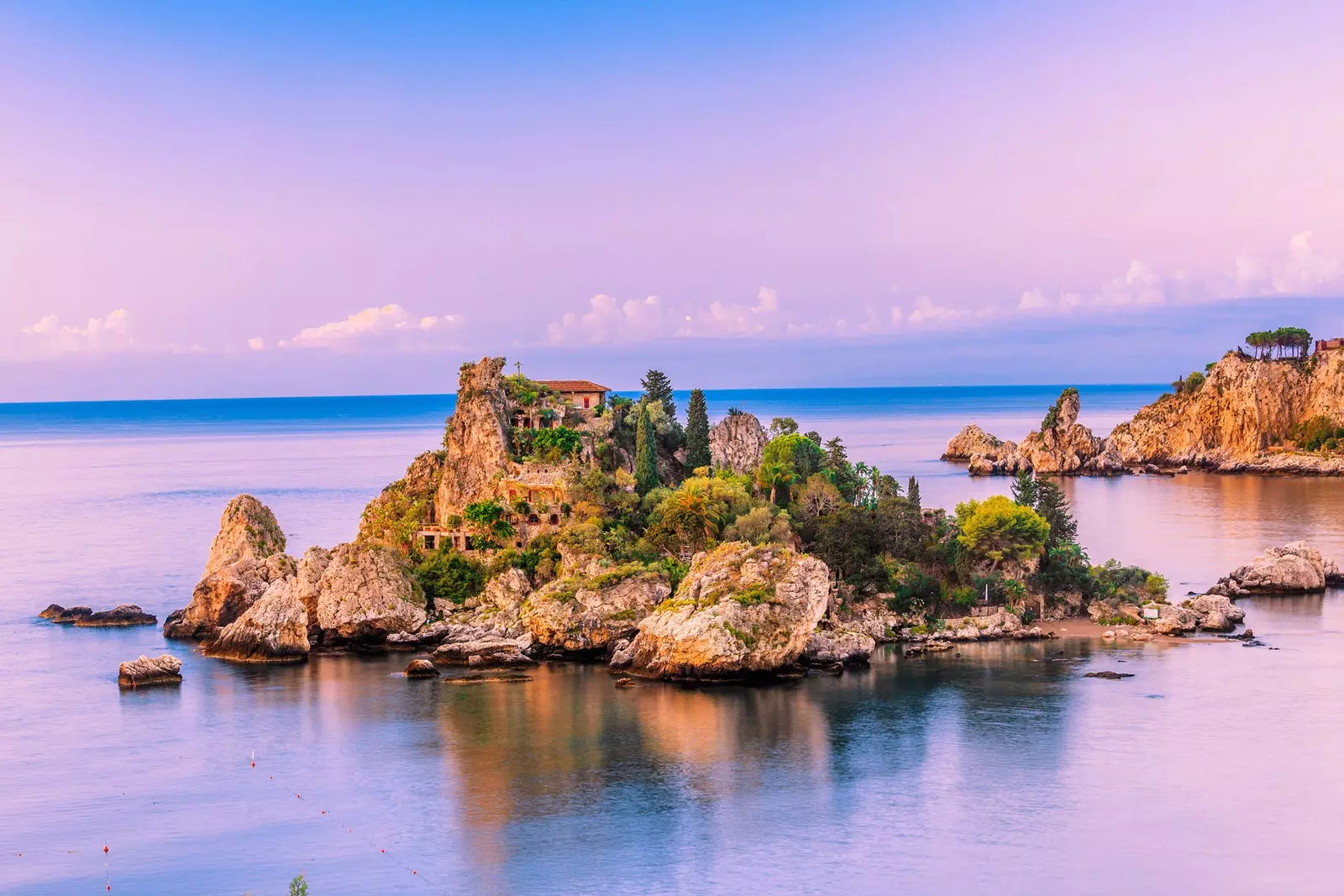
Isola Bella and its tiny coves where we can float under the swaying of the waves
However, there are still corners where cats meow in the shade of the craftsmen's baskets and children run home called by the smell of pasta alla norma: you just have to go up and down hundreds of steps in search of places where very few reach. Prepare the twins, hills are coming.
At the foot of Taormina, separated from the city by an imposing cliff, is its port and the start of our tour. In summer, the beach is crazy with bathers, sun loungers and beach bars, but from September solo walks are possible, and the autumn sun makes the sunsets in Taormina one of those wonders that will live in the memory.
At our side, bathes in the sea Isola Bella, natural and archaeological reserve on whose scarce and rocky surface stands a village surrounded by tiny coves where we can float under the swaying of the waves. Looking up, we'll see about us the white roofs of Taormina, hanging from the cliff like a gigantic swallow's nest hanging from an eaves, and we will distinguish, above, on the top of a narrow and pointed cliff, the silhouette of a castle.
the rock, as the locals call it, it is a fortress located on the Mount Taurus (400m), which dominates the city from its construction by the Byzantines, the first to notice the impregnable position of Taormina.
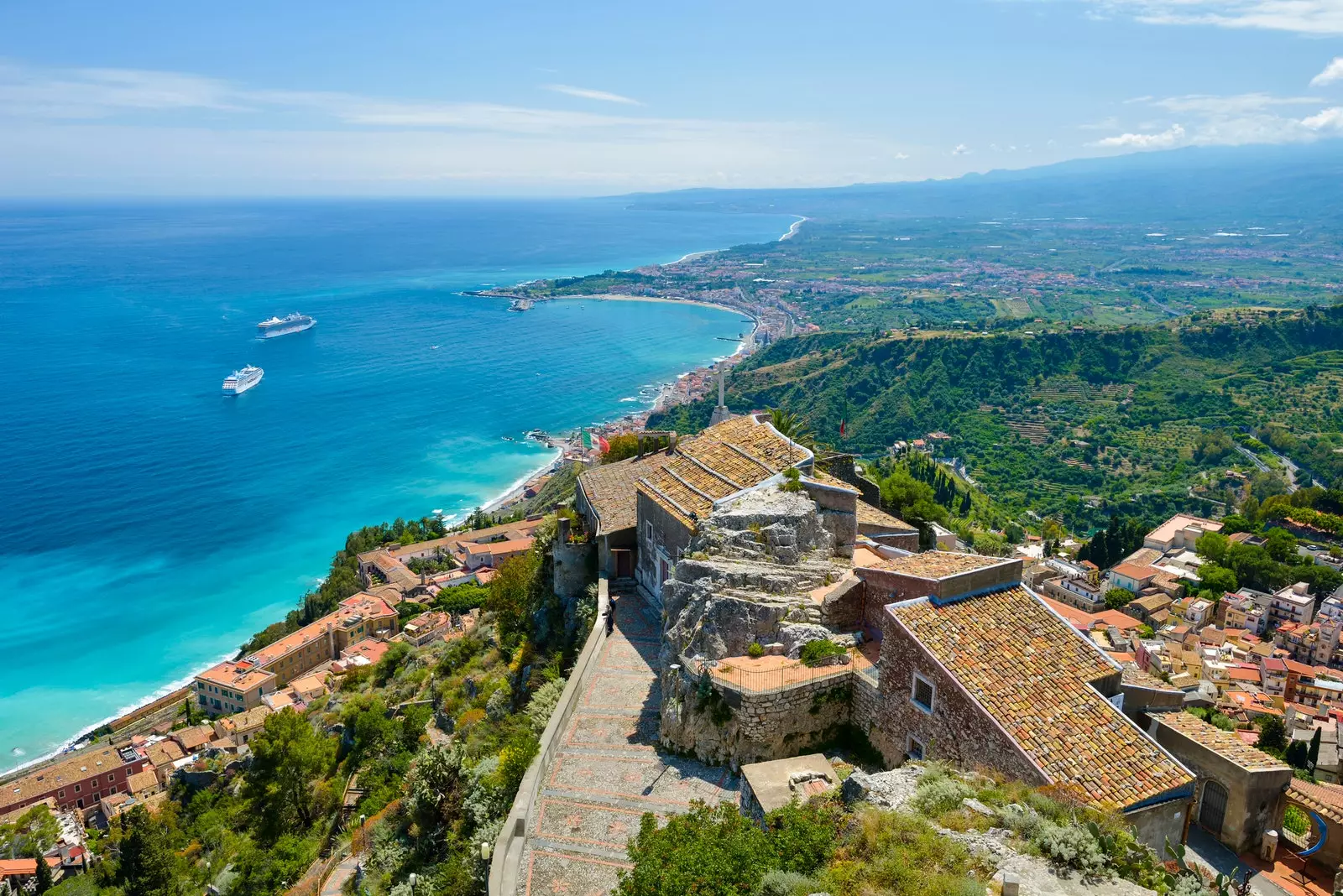
The world at your feet from La Rocca
The story of the “Pearl of Etna” is a succession of sieges and heroic resistance against Muslims, Normans and French, who tried all kinds of tricks to get, many times without success, to take the city. When the Arabs conquered Sicily, It took them 62 very long years to wrest it from the Byzantines and two to subdue it when they were finally able to concentrate all their forces on making it give up. When the Christians returned, They surrounded the city with a score of wooden towers that prevented any type of provisioning or exit of the besieged.
Not even the best captains of the time could draw up any plan to save the unevenness of its cliffs and the heights where the fortresses of La Rocca and the castle of Mola were erected: Taormina was always the last place in Sicily to fall.
He repeated this feat in 1675, when Sicily rebelled against Spanish rule and the city was one of the few that remained loyal to the Habsburgs, sustaining the siege for more than a year, putting an end to a history of resistance.
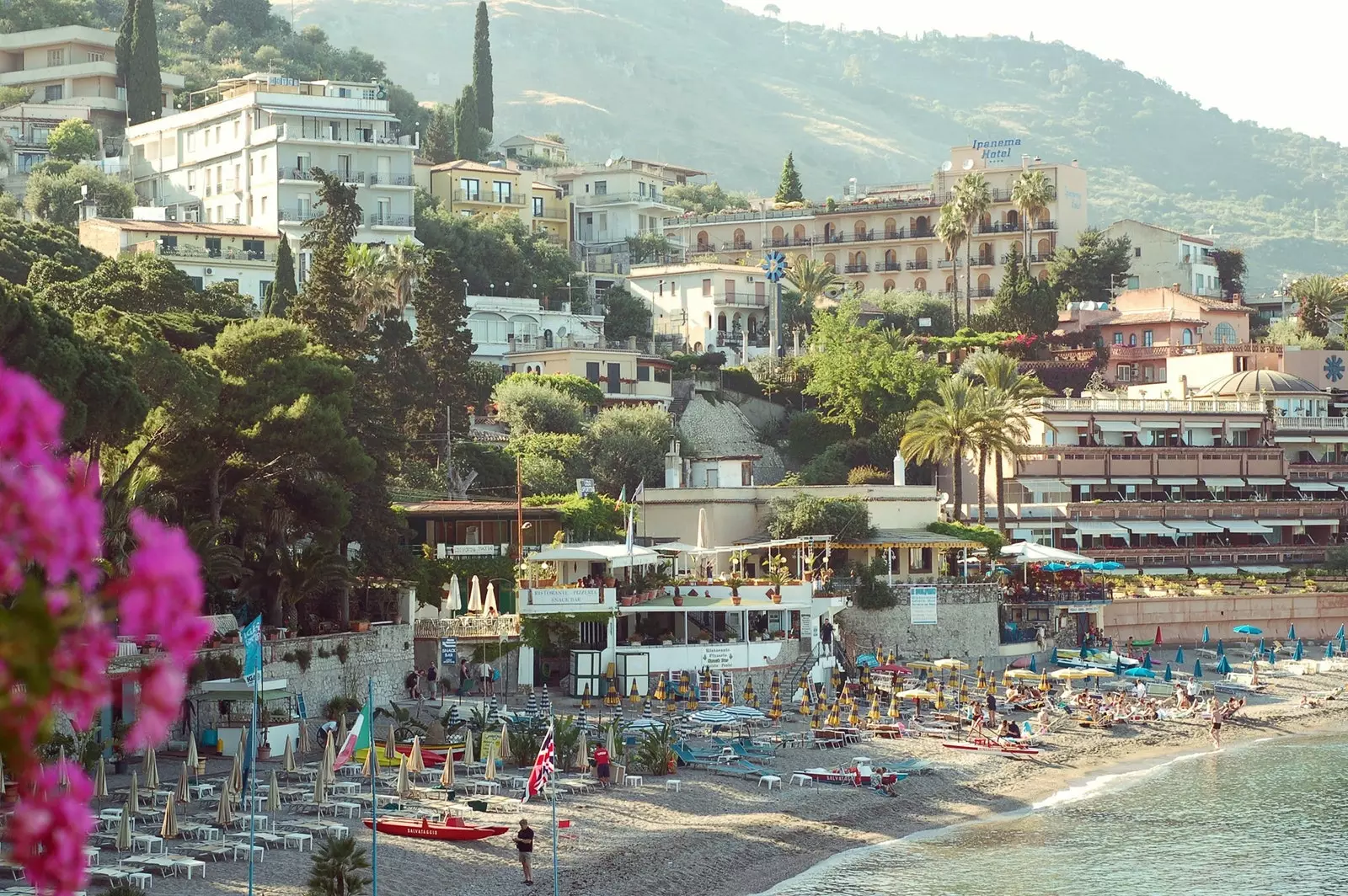
In summer, Taormina beach is crazy with bathers, sun loungers and beach bars
Modern warfare had rendered its walls useless, and powerless against the power of cannons, Taormina went from being an impregnable bastion to a seaside resort where Goethe or Jean-Pierre Hoüel would find rest: enlightened tourism was the only one that was introduced in the city without the mediation of force of arms.
From the waters that surround the Isola Bella we will ascend towards Taormina through some stairs that will put our cardio to the test: the view from the belvedere of via Pirandello will be the reward to obtain for our effort, and physical rest will accompany the mental observe the colors of the Mediterranean circling the island we've left behind.
Slowly but surely, we will continue ascending until we find the medieval wall and we will enter Taormina by Messina gate, Roman in its origins, and where it begins the oldest neighborhood in the city. The wealthiest families lived here, who built their luxurious palaces with marble from Roman ruins, the best example of which is the imposing Corvaja Palace (thirteenth century).
A hundred meters away, following the lines of tourists who will now form part of the landscape, is the jewel of Taormina: the roman theatre.
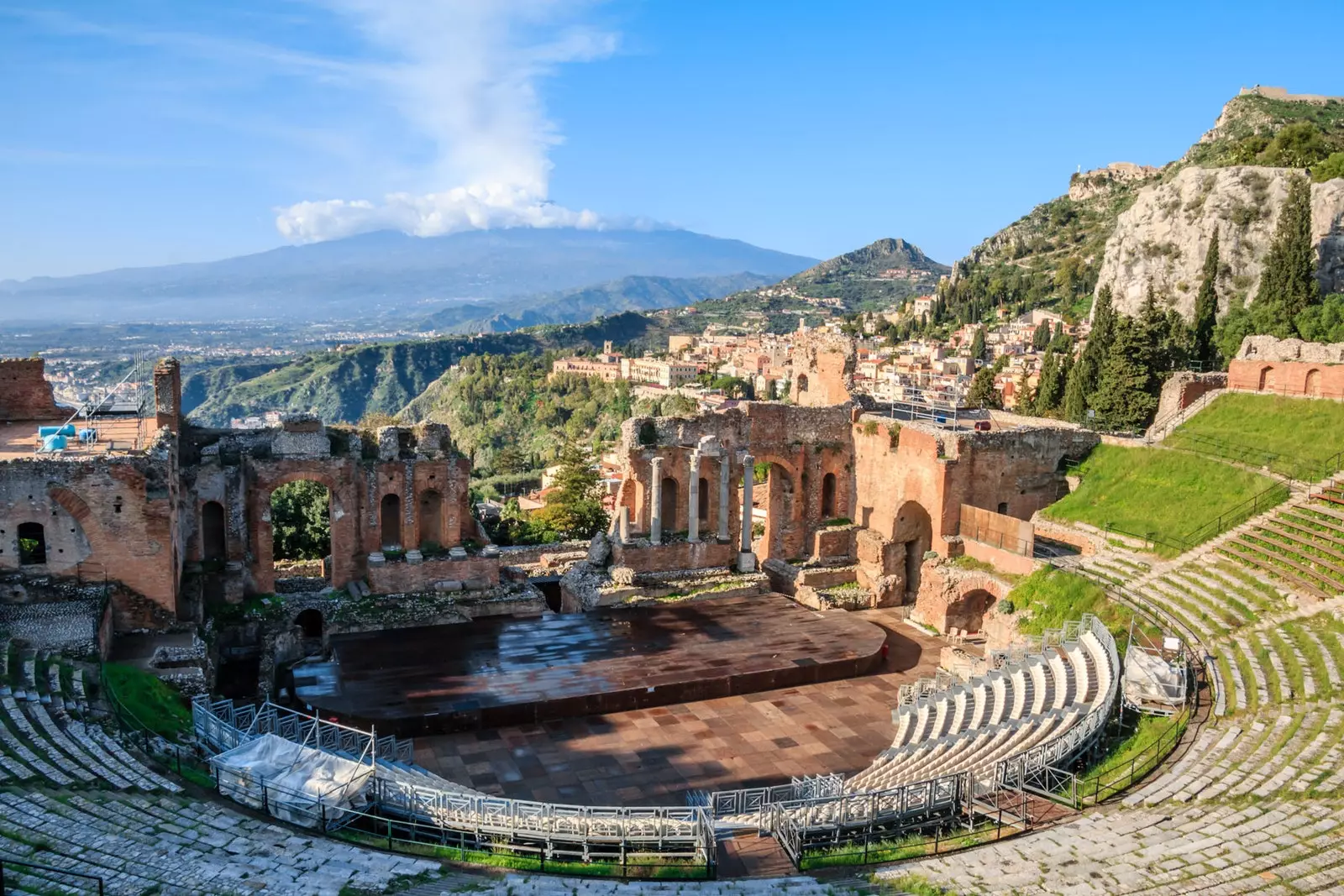
Taormina Greek Theater
Built on a hillside facing west, visitors who come to admire its ruins or witness a play during the festivals that take place in the summer months you can enjoy the best backdrop that Italy has to offer: the summit of Etna, snowy even in summer, always smoking, watches over and warns actors and audience that it never sleeps.
The Sicilians are an extremely devout people, and the city is dotted with churches and chapels that remind us of the prayers and efforts of the neighbors for not seeing the streets of their city tremble, once again. The same streets that keep, among suggestive trattorias and craft shops, the ruins of the Roman naumachia: a secret garden where statues once dwelt and which, today, it is one of the few corners of Taormina where you can hear the silence.
The neighborhood that surrounds it, whitewashed houses and stairs leading to balconies over the sea, it also maintains an aura that fades as we approach the Duomo, and the postcards that we used to look at alone are transformed into crowded photocalls where selfies rain down.
Nevertheless, in Taormina, everything, even mass tourism, has a certain bohemian charm, and even the incessant murmur of thousands of different languages is appreciated, like an Ariadne's thread with which to guide us through the alleys, peeking out at the facade of luxurious villas and hotels, without stopping turning around to look for the perennial reference of Etna reflected on the waves of the sea.
If we are looking for solitude and food, it is best that we leave Taormina and, either by bus or car, go to the nearby town of Castelmola. Much less known than the city that watches over from above, Castelmola is a handful of houses huddled together on a spur of rock that during For an instant, it will take us to Meteora and its monasteries, in distant Greece, due to its inaccessibility and height.
The views from the castle are worth the climb, Well, we can contemplate at our feet the Taormina that we have left behind, the Isola Bella where we float guided by the currents and the ruins of a Roman theater that, from a bird's eye view, is even more beautiful.
And as the best thing to overcome the vertigo that anyone can feel when looking out over the heights of Taormina is a good Italian coffee, my recommendation is to go through the Bar Turrisi, which occupies an old building next to the Duomo of Castelmola. Not because its coffee is excellent, which it is, or because of the views that can be enjoyed from its terrace, but because the curious decoration that the owners use perhaps as a tourist attraction or, because like sixties groupie Cynthia Plaster Caster, they are devoted admirers of male penises. Yes, you read that right: the Turrisi bar is decorated with ashtrays, handrails, shelves, lamps, chairs, tables, knobs and any object that can be sculpted in the shape of a human phallus.
Taormina, which seemed to hide no secrets, will never cease to amaze us.
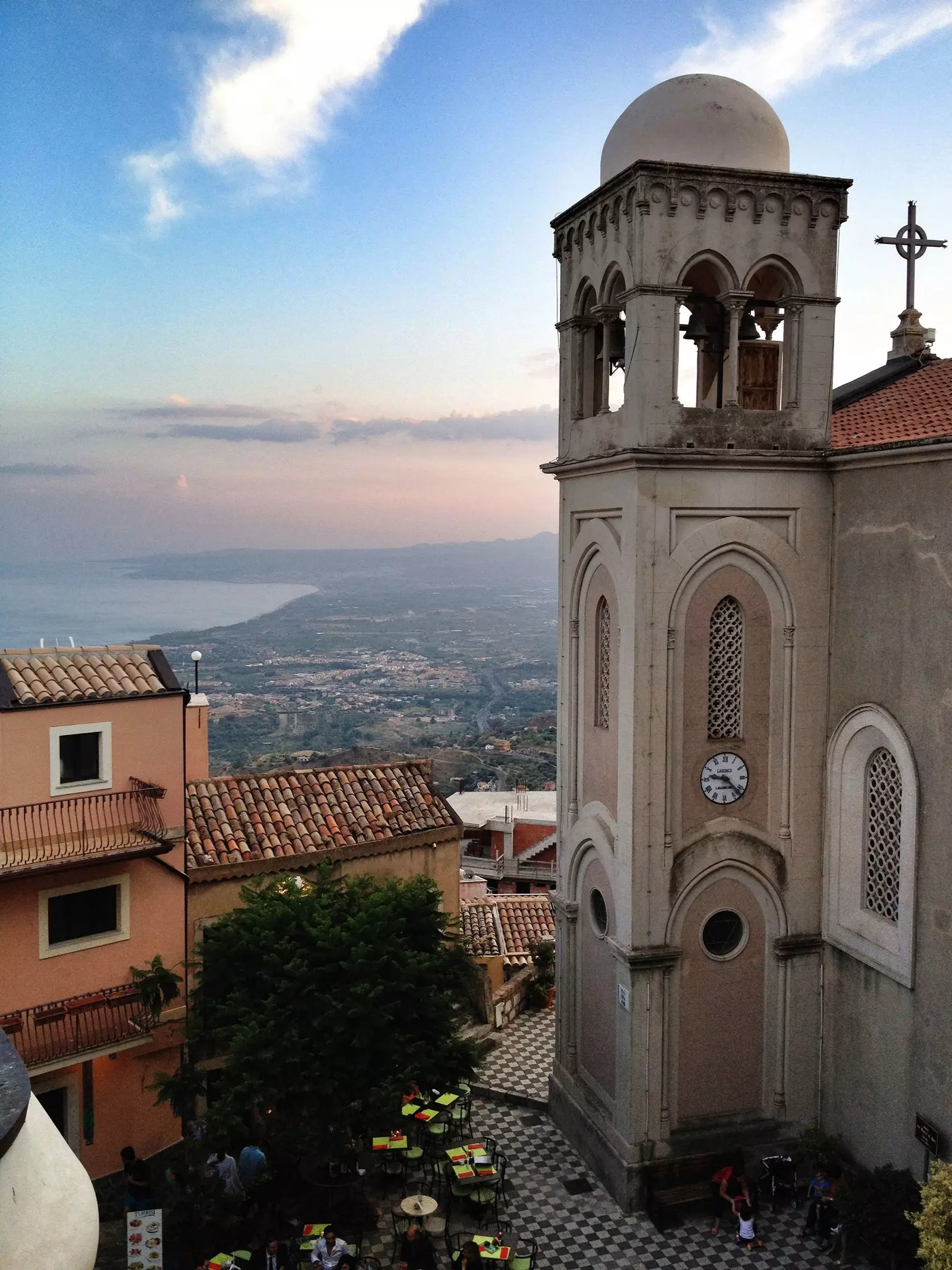
From Castelmola, the world looks like this
